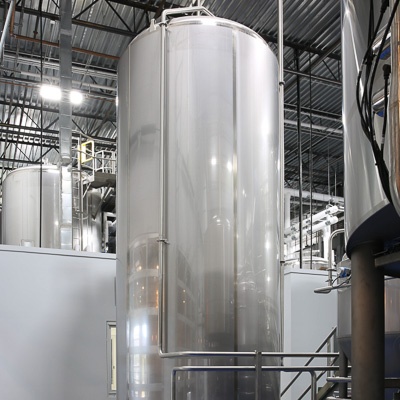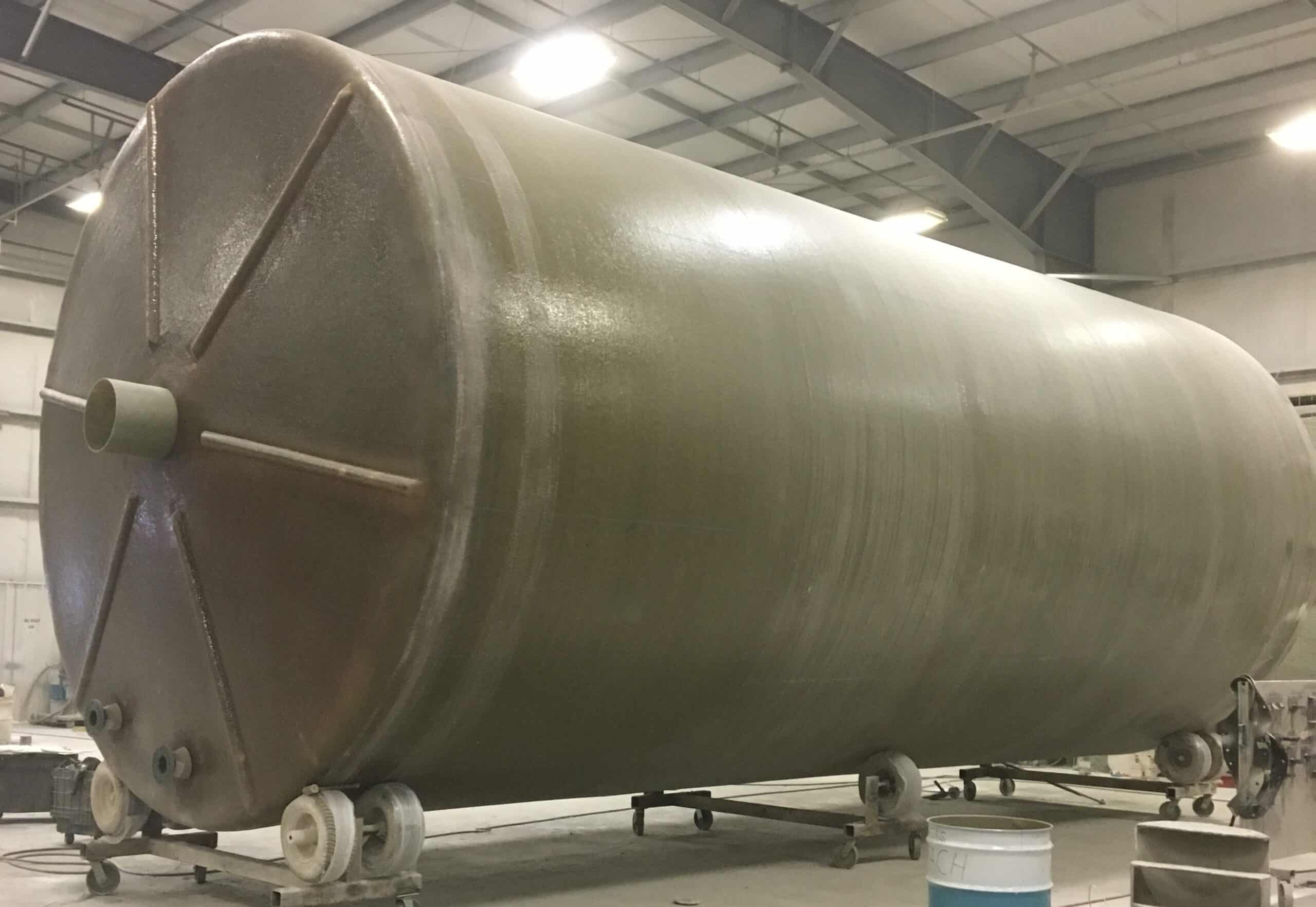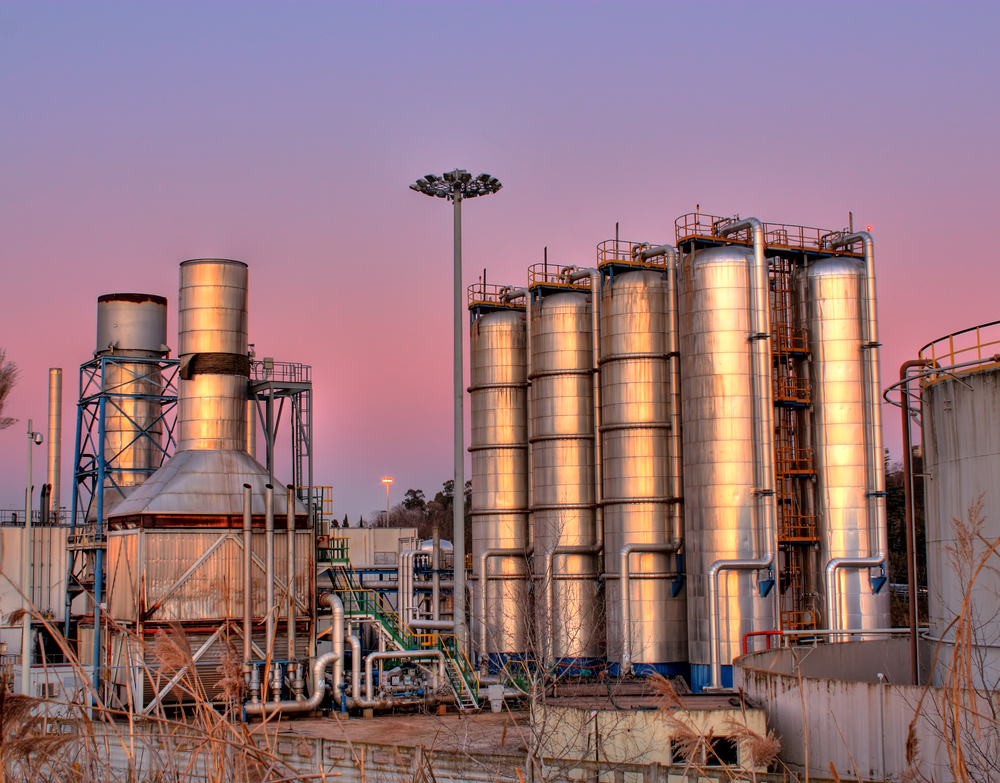How Oil & Gas Storage Tank Fabrication is increasing longevity of modern tanks
Leading Technologies in Storage Tank Manufacturing: Improving Performance and Sustainability
The landscape of storage tank manufacturing is undertaking considerable transformation as industry leaders progressively take on technologies intended at improving both performance and sustainability. Secret developments, including making use of clever modern technologies and advanced materials, are redefining functional requirements while addressing environmental problems. Additionally, modular container layouts and environmentally friendly manufacturing processes existing new methods for source optimization. As these trends remain to develop, the effects for sector techniques and lasting sustainability objectives advantage additionally expedition. What particular developments are establishing the phase for this standard change?
Advanced Materials for Sturdiness
The evolution of storage tank manufacturing is increasingly driven by the integration of innovative products developed to boost longevity and performance. Typically, storage containers were built primarily from carbon steel, which, while effective, is susceptible to corrosion and structural deterioration in time. Fox Tank Company Permian Basin. Recent developments have seen the introduction of high-performance alloys, composite materials, and polymers that offer superior resistance to environmental factors and chemical exposure
For instance, stainless-steel and duplex alloys are currently usual in applications needing increased corrosion resistance, specifically in chemical or aquatic storage environments. Composite materials, such as fiberglass-reinforced plastics, offer an exceptional strength-to-weight proportion while lessening upkeep costs due to their non-corrosive nature. These advancements not only extend the lifespan of storage space tanks yet additionally improve their operational effectiveness.
Furthermore, the adoption of nanotechnology in coverings is proving advantageous in more enhancing the safety properties of tank surface areas. These innovations not just minimize the regularity of maintenances however also contribute to sustainability by decreasing resource usage and waste. As the sector remains to innovate, the emphasis on innovative products will certainly continue to be a keystone of storage tank manufacturing, guaranteeing safety and integrity popular applications.
Smart Checking Technologies
Advancements in smart surveillance innovations are revolutionizing the administration and upkeep of storage tanks (Texas Oil & Gas Storage Tank Fabrication Authority). These advancements utilize the Net of Points (IoT), expert system (AI), and advanced sensing unit modern technologies to boost functional performance and safety. By incorporating real-time information collection, drivers can keep track of storage tank problems, such as temperature level, pressure, and liquid degrees, with unprecedented precision
Smart surveillance systems enable anticipating upkeep, permitting for prompt treatments prior to prospective failures occur. This minimizes downtime and reduces maintenance costs, as drivers can attend to issues based on data-driven understandings instead of reactive measures. Additionally, these technologies boost safety and security procedures by supplying informs for leaks, overfills, or structural weak points, greatly mitigating ecological dangers.
Moreover, cloud-based platforms promote central surveillance across multiple places, enabling drivers to make enlightened choices quickly. Improved data analytics additionally add to enhancing inventory monitoring, guaranteeing that sources are utilized effectively.
As regulative demands for environmental conformity become progressively stringent, clever monitoring technologies play a crucial function in making sure storage containers satisfy these criteria. Generally, the adoption of these technologies not only boosts functional efficiency however likewise advertises sustainability in storage tank manufacturing and monitoring.
Modular Tank Layouts
Modular container layouts are revolutionizing the storage tank market by offering boosted personalization choices that deal with certain client requirements. These layouts not only promote customized remedies yet additionally give space-saving arrangements, making them suitable for diverse environments. As sectors seek efficiency and adaptability, modular storage tanks provide an engaging choice to typical storage services.
Enhanced Modification Options
As makers strive to satisfy varied client demands, boosted personalization choices in storage tank layout have become progressively common. Modular tank styles exemplify this fad, permitting customized setups that fit various operational needs. By using modular components, makers can create storage tanks of various sizes, forms, and capabilities, making sure compatibility with certain applications.
These adjustable tanks can be adjusted to hold various sorts of fluids, including hazardous materials, without compromising safety or efficiency. In addition, modular designs facilitate scalability, making it possible for business to expand their storage capacity seamlessly as need grows. This flexibility not just optimizes area use yet likewise minimizes the total lifecycle costs linked with container installation and upkeep.
Moreover, enhanced customization options include sophisticated features such as incorporated monitoring systems, insulation, and specialized coverings that enhance durability and efficiency. By offering an array of alternatives, producers encourage clients to choose layouts that align with their functional goals and sustainability efforts.
Eventually, the increase of enhanced modification options in storage tank manufacturing highlights a dedication to innovation, enabling markets to respond successfully to evolving market demands while enhancing overall effectiveness and ecological stewardship. (Texas Oil & Gas Storage Tank Fabrication Authority)
Space-Saving Configurations
Making best use of space effectiveness has actually ended up being an important factor to consider in storage tank design, specifically with the arrival of modular container configurations. These ingenious designs enable the setting up of tanks in various arrangements, giving flexibility and adaptability in space-constrained environments. Modular tanks can be quickly delivered and installed, making them excellent for industries requiring on-site storage space remedies.
The use of modular styles not only maximizes space but additionally boosts scalability. Organizations can begin with a smaller sized device and expand their storage space ability by adding added components as need boosts. This incremental approach lowers in advance prices and permits for far better source administration. In addition, modular containers can be personalized concerning product, dimension, and arrangement, dealing with particular functional demands.
Sustainability is also a key advantage of modular tank arrangements. By making use of standardized elements, manufacturers can lower waste throughout manufacturing and streamline the supply chain. Furthermore, these tanks usually include enhanced insulation and energy-efficient designs, leading to reduced functional costs.
Eco-Friendly Manufacturing Processes
As the demand for eco accountable manufacturing grows, the storage tank industry is welcoming environment-friendly procedures to improve sustainability. This includes the choice of lasting products, the execution of energy-efficient manufacturing methods, and the fostering of waste reduction methods. By focusing on these techniques, producers can substantially decrease their environmental impact while keeping item high quality and efficiency.
Sustainable Material Selection
Sustainable material choice is a cornerstone of environment-friendly manufacturing procedures in the storage tank industry. The selection of materials exceptionally affects not just the environmental footprint of manufacturing but also the durability and efficiency of the containers themselves. Making use of recycled or sustainably sourced products, such as high-strength alloys and advanced composites, decreases the requirement for virgin resources and minimizes waste.
In addition, the combination of products with lower embodied power adds to a reduction in greenhouse gas emissions throughout the production lifecycle. As an example, safe coatings and bio-based polymers are gaining traction, using both sturdiness and ecological advantages. These products not just meet the rigorous requirements for safety and efficiency however likewise improve the containers' resistance to corrosion, extending their service life and lowering maintenance prices.
In addition, suppliers are significantly adopting life cycle analysis (LCA) methodologies to review the environmental effect of product options. By prioritizing products that are recyclable or biodegradable, the storage tank sector is taking substantial strides toward a round economy. This dedication to lasting material selection not only lines up with governing standards however additionally fulfills the growing go to website need from eco conscious customers and businesses alike.
Energy-Efficient Production Strategies
In the quest for lowering ecological effect, energy-efficient manufacturing strategies have become crucial parts in the storage tank producing market - Oil & Gas Storage Tank Fabrication. These approaches not just lessen energy usage but likewise improve operational performance and lower overall manufacturing costs
One substantial method is the adoption of innovative manufacturing technologies, such as computer system numerical control (CNC) makers, which maximize accuracy and reduce waste throughout the manufacture procedure. Automation and robotics have also gained prestige, permitting for structured procedures that need much less energy and manpower. Moreover, the integration of renewable resource sources, like solar and wind power, into making plants has become significantly usual, enabling companies to minimize their dependence on nonrenewable fuel sources.
In addition, implementing power monitoring systems helps monitor and maximize power use throughout the manufacturing cycle, determining locations for enhancement and ensuring compliance with environmental standards. These systems can bring about significant reductions in power usage, adding to a more lasting manufacturing procedure.
Waste Decrease Techniques
The execution of energy-efficient manufacturing methods normally causes an increased emphasis on waste reduction methods in storage tank manufacturing. Business are progressively taking on techniques that lessen material waste while maximizing resource usage. Trick methods consist of lean manufacturing concepts, which enhance procedures to eliminate inefficiencies and decrease excess supply.
Recycling and reusing products is another crucial approach. Many manufacturers are now buying innovations that help with the improvement of scrap metal and other spin-offs throughout production. This not only conserves raw materials however additionally lowers disposal costs and environmental effect.
Moreover, producers are accepting electronic modern technologies such as IoT and information analytics to keep track of and handle waste better. These devices can identify waste generation points and supply understandings for constant enhancement. In addition, applying closed-loop systems makes it possible for firms to utilize waste items as inputs for brand-new procedures, cultivating a circular economic climate.
The quest of certifications such as ISO 14001 underscores the dedication to sustainability and waste decrease, positioning firms favorably in an open market. By systematically addressing waste, storage tank makers can achieve both economic and ecological advantages, driving onward an extra sustainable industry.
Energy-Efficient Insulation Solutions
As producers look for to improve the efficiency of tank, they are turning to cutting-edge energy-efficient insulation options that significantly minimize thermal losses. One noticeable pattern is the use of innovative products such as aerogels and vacuum-insulated panels, which offer outstanding thermal resistance while being lightweight. These products not only minimize warm transfer but additionally contribute to a lowered overall footprint and reduced installment expenses.

Applying these energy-efficient insulation remedies not only results in significant energy savings yet likewise aligns with sustainability objectives by lowering greenhouse gas discharges connected with home heating and cooling procedures. As the market develops, the emphasis on insulation modern technology will remain critical in ensuring that tank fulfill modern-day efficiency standards while contributing positively to environmental sustainability.


Automation in Tank Production
Developments in automation modern technology are reinventing container manufacturing, significantly enhancing performance and accuracy. Automated systems now play an essential role in numerous phases of manufacturing, from product dealing with to welding and setting up. These modern technologies decrease human intervention, therefore minimizing the probability of mistakes and increasing throughput.
Robotic systems are significantly used for jobs such as welding and surface area treatment, guaranteeing consistent quality and reducing manufacturing time. Automated quality assurance systems utilize sophisticated sensing units and equipment learning formulas to find defects in real time, allowing suppliers to attend to problems without delay and preserve high standards.
The combination of Web of Things (IoT) innovation in tank production promotes real-time tracking of equipment and processes. This connectivity leads to improved operational understandings, making it possible for suppliers to maximize operations and upkeep routines. Anticipating analytics can expect tools failures, additionally enhancing integrity and reducing downtime.
Improved Safety And Security Features
Incorporating boosted safety functions into storage tank manufacturing has actually become a vital emphasis for sector leaders. As the need for reputable and safe and secure storage space remedies expands, producers are adopting ingenious technologies and design principles to alleviate threats related to harmful materials.
One notable advancement is the consolidation of advanced leak discovery systems. These systems utilize sensors that monitor tank integrity, allowing early identification of leakages and preventing environmental contamination. In addition, making use of double-walled storage tanks adds an additional layer of security, making sure that if the internal wall surface fails, the external wall has any kind of potential spills.
In addition, makers are applying stress relief shutoffs and overfill avoidance systems to resolve possible overpressurization and overflow scenarios. These devices are designed to activate immediately, considerably minimizing the risk of tragic failures.
Additionally, the assimilation of wise monitoring modern technologies enables real-time data collection and evaluation. This ability allows aggressive upkeep and fast response to any safety worries, ensuring compliance with sector policies.
Often Asked Concerns
Just How Do Storage Tank Innovations Influence Overall Operational Costs?
Innovations in storage tank manufacturing considerably lower functional prices by boosting efficiency, reducing upkeep demands, and optimizing resource use. These developments result in reduce power intake and extended devices life-span, ultimately boosting total financial performance for companies.

What Industries Benefit Most From Advanced Storage Tank Technologies?
Industries such as oil and gas, chemicals, water treatment, and food processing considerably gain from innovative storage tank innovations. These technologies improve safety, enhance resource management, and boost operational effectiveness, ultimately lowering costs and ecological effect.
Exist Particular Qualifications for Eco-Friendly Tank?
Yes, certain accreditations for environment-friendly storage containers exist, such as the Environment-friendly Structure Council's LEED accreditation, ISO 14001 for ecological administration, and various industry-specific requirements that ensure compliance with sustainability and safety policies.
What Is the Life Expectancy of Modern Storage Space Containers Contrasted to Conventional Ones?
Modern storage tanks commonly have a life-span of 30 to 50 years, noticeably exceeding standard tanks, which commonly last 15 to thirty years. Advanced products and producing techniques add to this increased resilience and durability.
How Do These Innovations Affect Regulatory Conformity in Tank Manufacturing?
Technologies in tank manufacturing boost regulative compliance by incorporating innovative materials, automated surveillance systems, and boosted style criteria. These advancements ensure adherence to security guidelines, lower environmental impact, and promote sustainability within the sector.
The development of storage space tank manufacturing is progressively driven by the combination of sophisticated materials made to enhance toughness and efficiency. Modular tank designs are reinventing the storage container sector by offering enhanced personalization choices that provide to particular customer needs. Making best use of room performance has come to be a critical factor to consider in storage space container design, particularly with the advent of modular container configurations - Storage Tank Manufacturing. Advancements in storage space container manufacturing substantially minimize functional costs by improving performance, reducing maintenance requirements, and maximizing source use. Modern storage tanks generally possess a life expectancy of 30 to 50 years, substantially outpacing standard tanks, which frequently last 15 to 30 years